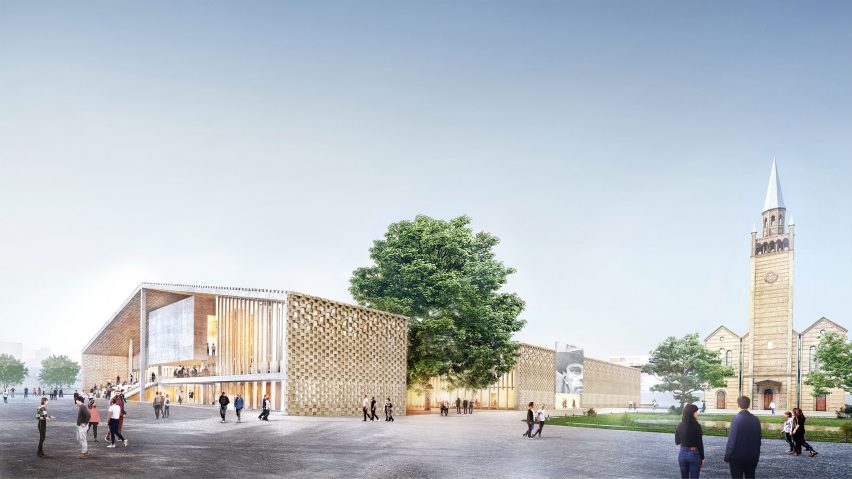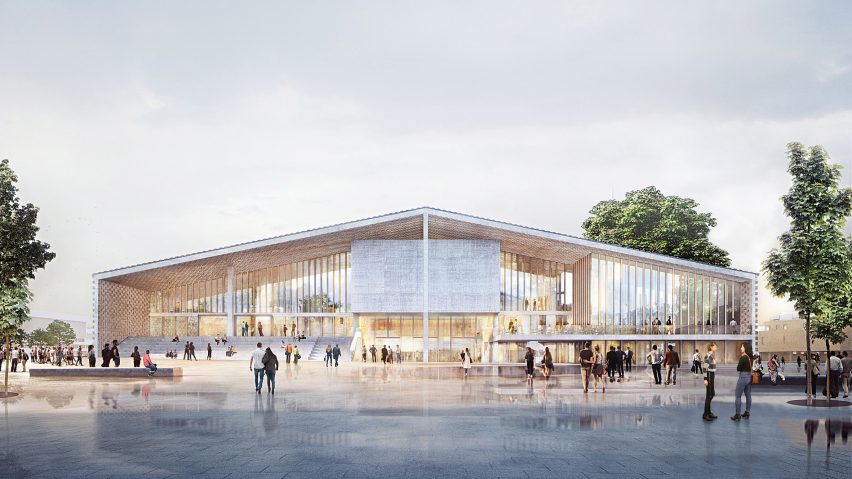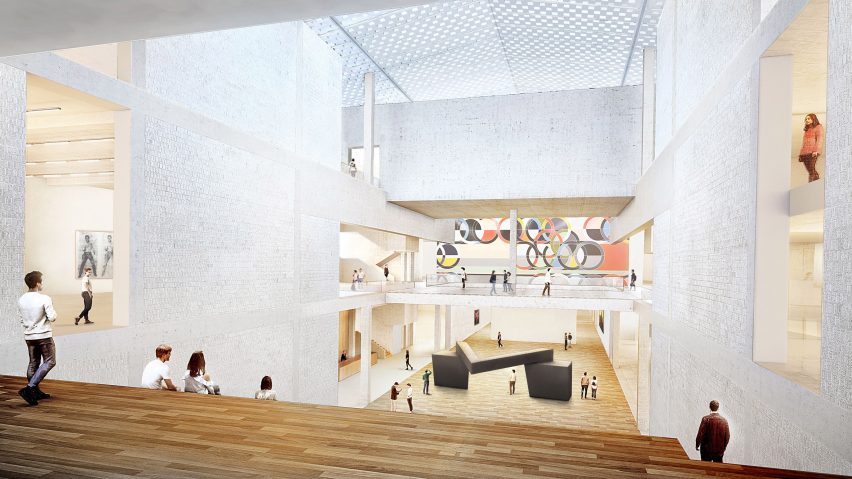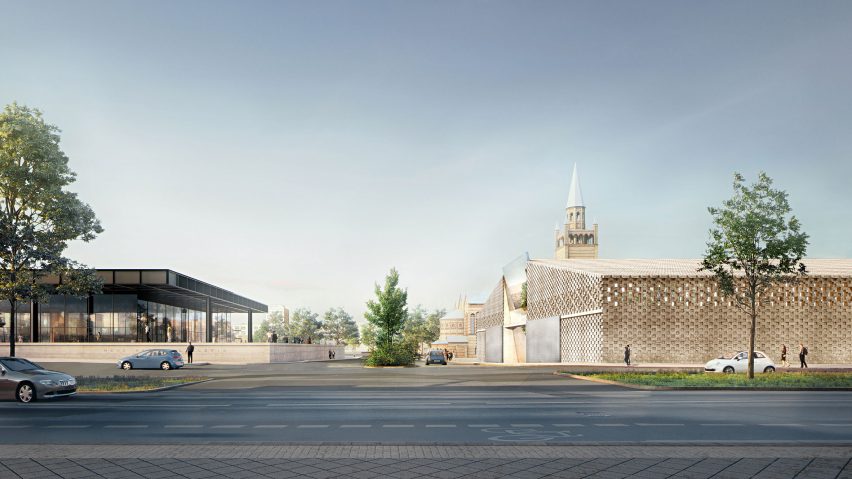
Herzog & de Meuron's Museum of the 20th Century an "environmental disgrace" say critics
Environmentalists and architecture critics have raised concerns about the carbon footprint of a major new museum for modern art designed by Herzog & de Meuron, which is under construction in Berlin.
Due to its complex air conditioning system, the Museum of the 20th Century will use four times as much energy as a nearby museum that was built in the 1800s, according to calculations by sustainable conservation expert Stefan Simon.
In the face of Germany's mounting energy crisis, this makes the building "an environmental disgrace", said low-carbon architecture expert Philip Oldfield.

"Again we see some architects – at the exact time they should be stepping up to create the most energy-efficient buildings possible – instead creating gas-guzzling designs that put the climate agenda as the lowest priority," he told Dezeen.
The museum, which will be connected to Mies van der Rohe's Neue Nationalgalerie via an underground tunnel, also relies heavily on emissions-intensive concrete in its subterranean construction.
German art expert Tobias Timm has dubbed the building a "monument to the fossil-fuel age" and called on the government to temporarily pause construction of the publicly-funded building so that it can be redesigned.
Museum's budget doubled to €450 million
Set to open in 2026, the Museum of the 20th Century was designed as an extension to the Neue Nationalgalerie, recently renovated by David Chipperfield, so that together the two buildings will provide a comprehensive overview of art across the last century.
Swiss architecture studio Herzog & de Meuron revealed its competition-winning plans for the standalone building in 2016, which consist of a sprawling structure of perforated bricks topped with a gabled roof, earning the building its nickname "the barn".
The project faced criticism even before ground was broken on the museum last November, as cost projections had more than doubled from €179 million to €450 million.

Meanwhile, Germany's federal audit office found the sustainability of the design to be lacking and demanded that it be overhauled to be more energy efficient, in particular in regard to its complex air conditioning system.
This will have a "high energy requirement" and high usage costs, the audit office found, due to the fact that Herzog & de Meuron envisioned the interior to be largely open and uninterrupted by doors.
This means that huge portions of the building, including two publicly accessible "boulevards" that crisscross the building, have to be carefully climate controlled to protect the artworks, rather than just the specific rooms in which they are kept.
"The building shouldn't be difficult to make low-carbon"
As a result, the "climate killer" museum will have an energy consumption of 450 kilowatt-hours per square metre, according to Simon who is the director of the Rathgen Research Laboratory on conservation science.
That's roughly four times the amount of energy used by the nearby Altes Museum, which literally translates as "old museum" and was constructed in 1830.
"In a democracy, we cannot build a state museum that undermines the basis of life for our society," Simon told German newspaper Die Zeit.
"If this planet can no longer be inhabited by people in a hundred years due to climate change, then there will no longer be a need for museums and works of art."
"The building's design shouldn't be difficult to make low-carbon," added Oldfield.
"Separate artwork that needs precise temperature control from circulation and gathering spaces that do not. It's not difficult. But this seems to have been either ignored or simply dismissed."
The Prussian Cultural Heritage Foundation, which commissioned the museum, claims that the building's energy consumption has since been improved to 260 kilowatt-hours per square metre, which is still around twice as much as the Altes Museum.
Rooftop solar to be added
The German parliament this month granted a further €9.9 million to the project out of this year's budget in order to make the Museum of the 20th Century more sustainable.
How exactly this will be achieved is set to be announced in spring. But Herzog & de Meuron co-founder Jacques Herzog has already suggested that this will involve making use of recycled materials and photovoltaics.
"We can only change the materials to a limited extent because museums have these requirements that require a lot of concrete," he told the German public-service broadcaster ZDF.
"But we now have a lot of recycled material, recycled concrete. And the roof will be equipped with a kind of energy centre with solar panels."

Herzog & de Meuron originally dismissed the idea of a rooftop solar farm because it did not correspond to the firm's "artistic ideas", the federal audit office reported, and would be too expensive given the gabled shape of the roof.
Critics have argued that the building needs more fundamental changes, with Timm saying that adding solar panels to the building at this stage would be purely "cosmetic".
Similarly, Simon estimates that rooftop photovoltaics would only cover around 10 per cent of the building's outsized electricity demand.
The Prussian Cultural Heritage Foundation did not immediately respond to a request for comment.